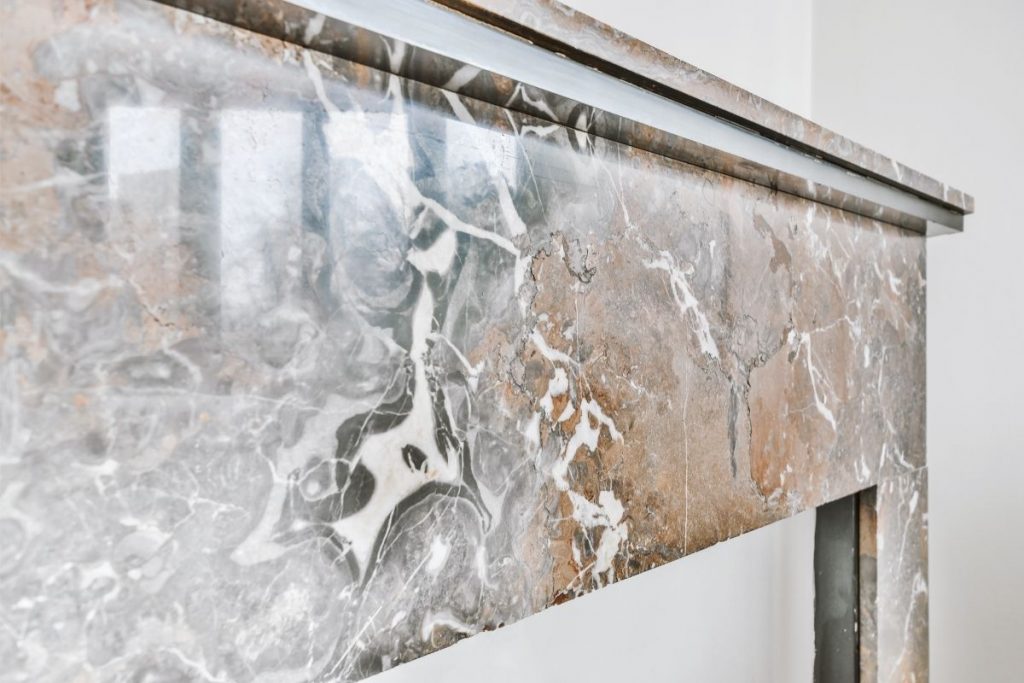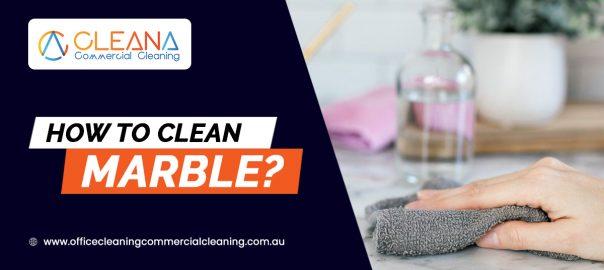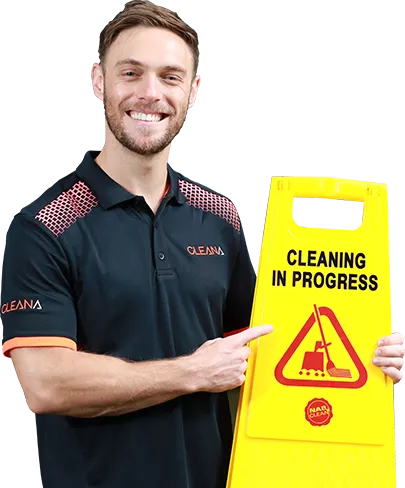Marble is a beautiful, luxurious (and expensive!) material, that is often used in the home. It is prized for its stunning look, its hard wearings, and its quality feel. However, it is a natural (rather than man-made) material, and therefore can be a little finicky to clean, maintain, and prevent damage, so that it is always looking its best.
As it is so expensive, and a bit of a specialty stone, it requires some special care to keep clean and in tip-top condition. If cared for and cleaned right, it can stay beautiful for decades to come. We are experienced at commercial cleaning a wide variety of household materials – learn how to keep all the marble in your home gorgeous with our list of tips and tricks.
Our General Tips for Cleaning Marble
When deciding on marble for your home, it is important to consider that, for marble surfaces, you will need a different set of cleaning products (as well as cleaning methods), than for other natural or artificial materials.
You will also need different methods of cleaning if you want to keep your marble in the best condition. If you don’t take the right precautions, don’t use the right products, or the right sponges or cloths, you can leave your marble scratched, stained, or scuffed.
You don’t want to over-enthusiastically clean your marble either – using too much force can damage the marble, so you want to be gentle with this stone.
What To Use When Cleaning Marble?
the most essential factor when it comes to cleaning your marble is the use of a mild, pH neutral, and non-abrasive cleaning agent/soap. Though you can use a specially formulated cleaning product, bog-standard dish soap mixed with water in a spray bottle (or even a few drops on a damp cloth) is very effective.
Wipe the surface down with this solution, and a soft cloth, and then rinse immediately and wipe dry. The only thing to be careful of when using this method is using too much soap. The surface can be left with a dirty-looking film if you use too much.
What To Avoid When Cleaning Marble?
all kinds of acidic cleaners, such as vinegar, lemon, Windex, and bleach should never come into contact with marble. Marble is very susceptible to acidic chemicals – for example, even a wedge of lemon can start to eat into a slab of marble, even within a few seconds of contact.
Avoid any contact with rust-removing solutions, as they contain acid as well. Gritty cleaners, or abrasive sponges, also need to be left in the cupboard, as the abrasive movements/compounds will scratch any finish off of the marble. Extremely alkaline substances (which are known as basic) will damage the surface.
Stain Preventions
the most important, and most difficult part of marble maintenance. As soon as any kind of liquid stills on a marble surface, there if the potential that it will leave a stain. Mop it up with a paper towel, dry kitchen cloth, or soft towel. Try to blot it to absorb the liquid, rather than wiping it (as this might spread the liquid over a larger area, and hence make the stain worse).
You want to be particularly careful when it comes to spills of alcohol, or citrus (such as lemonade), as these can damage your marble by dissolving it. After you have blotted all of the liquid up, you will need to wash the area, with a pH-neutral solution, and rinse repeatedly, to ensure that there is no remaining staining liquid that can damage your marble.
In addition to knowing how to deal with a spill when it does happen, you should also consider investing in a marble sealant to protect your surfaces from stains.
You will have to apply this product at least once a month, but it will protect your marble by strengthening the finish. You will still have to clean any spills immediately, but the sealant will give you a few more minutes before it becomes a dire staining emergency.
However, don’t immediately click off this website to go purchase your sealant – some kinds of marble won’t absorb the sealant, so you will have to do some research into your marble, and the manufacturer’s recommendations or you may end up doing more harm than good.
How to Clean Specific Marble Surfaces?

Though our tip tips work for pretty much all kinds of marble surfaces, there are a few specific things that you need to keep in mind depending on the location of marble within your home. A lot of these focuses on prevention, rather than actual cleaning, which will stop you from having to spend hours cleaning your marble.
Cleaning Marble Floors
As a material for flooring, marble is incredibly popular, but also incredibly prone to scratches. It is important to remove any grit, sand, or other abrasive particles, as soon as you can.
To do this, start with a clean, dry dust mop, which will help to get the bulk of the dirt off up of your marble flags or tiles. You can also use a vacuum cleaner, however, ensure that all parts that will come into contact with the marble flooring are in good condition, and stand no chance of scratching the stone.
If there is caked on grime, then you can use a steam cleaner to loosen and remove this, but make sure that you dry the marble after it has been steamed.
Cleaning Marble Counters
Marble countertops can be quite a challenge when it comes to maintenance, as often, during the cooking process, or food preparation, it will be exposed to acidic ingredients. We strongly suggest that you always use a cutting board, and even invest in silicon mats as a barrier between any spills and the countertops.
Always clean any spills immediately, especially when they involve acidic compounds, such as vinegar, lemon, or tomato. Always use a trivet or under hot pans and dishes.
Cleaning Marble Showers
With a marble shower, your job is mainly to prevent any soap scum from forming. Use a squeegee to scrape any water off of the shower walls, every time that you use the shower.
This will prevent your soap from damaging the shower walls and marble finish. You can use a steam cleaner here, for any stubborn dirt, but again, squeegee or dry your shower walls.
Removing Stains From Your Marble
If you live in a busy house, there will likely be a spill on your marble that you don’t quite get to in time. Once you have cleaned up the spill, it is best to get cracking on the stain as soon as possible, so it doesn’t have a chance to set in the stone.
Stains that come from organic materials, such as coffee, wine, food, or pet urine, are usually best treated with a solution of 12% hydrogen peroxide, with a few drops of ammonia mixed in.
Stains that are the result of oil-based compounds, such as milk, cooking oil, or cosmetics, should be lifted with acetone, or mineral spirits and then extensively rinsed away. Ink strains (or even small paint stains) can be removed using lacquer thinner or acetone, though this may etch the marble.
Final Thoughts
Though marble can be a slightly finicky material for interiors, it is by no means impossible to clean or maintain. Much of the care involved with marble is preventative maintenance, protecting marble from the usual wear and tear associated with home materials.
When cleaning your marble, always remember to mop up spills immediately, and clean using soft, non-abrasive cloths, and pH-neutral cleaners.

